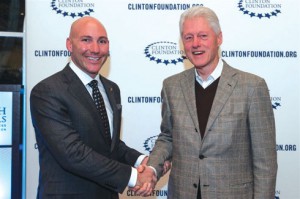
On behalf of HEI Hotels, Ryan Sistare receives well-deserved recognition from the President at the 2013 Clinton Conference
At the Clinton Health Matters conference in January, Ryan Sistare of HEI Hotels & Resorts presented his company’s employee health and wellness program. Desert Health is pleased to share his story to serve as an inspiration for the Coachella Valley’s large hospitality industry. HEI Hotels & Resorts is a privately held company with 45 hotels in 16 states and over 5,000 employees.
I remember a quote from a former, rather challenging boss which has stuck with me. He said “Change is great, Ryan, until it affects you.” But today, I am pleased to share with you the challenges, strategy and outcomes of our employee health and wellness program.
Let’s start with a few statistics from the Hotel industry:
- According to the Hotel/Motel Lodging Association, the average education of a hotel employee is the fourth grade.
- According to Tufts University, 60% of all immigrants in gateway cities in the US work in hotels.
- In a John Walker text entitled Supervision in the Hospitality Workplace, he indicates that hotels are the leading employer of minorities in the US
- According to the CDC, African Americans lead the obesity statistics with 49% of their population. Hispanics are a close second at 40.5%.
These are our employees and in 2010, things started to change. Health care costs had become overly burdensome to both the employer and the employee. The situation was not sustainable. We (as a company) knew we had to change behaviors to improve the well-being of our employees.
My company is a microcosm of what can be accomplished when strategic health care change is embraced.
First, we partnered with Cigna Health Care. We developed a consumer-driven insurance program that is unique in the hotel industry. In fact, currently we are one of only two companies taking advantage of this program.
Key elements encourage employees to use their primary care physician instead of the emergency room for common illnesses, by charging more out of pocket for going to the emergency room. This saves both the employee and the health care system money in the long term. Through our online tools, employees can actually ‘shop’ for any medical procedure they need. These tools show them where their dollars and those of the insurance company go based on their selection. These figures can be absolutely staggering to individuals.
The program also encouraged employees to take advantage of free wellness services
like colonoscopies and mammograms. Everyone likes something that is free. We also offered complementary biometric screenings for all employees to provide a baseline for individual health. In addition, we offer them programs to improve those statistics.
We also created a complimentary Employee Assistant Program offering legal advice, marital advice, and other services to help our associates thrive. A happy and healthy associate is more productive, resulting in better bottom line and long-term results for our company. These complimentary services are offered to all employees – those who elect insurance coverage as well as those who do not. As a company, we believe the underinsured and uninsured should have the same access to these quality-of-life services as those of us who have insurance.
Then, we took things down to the micro-level. We improved our employee meal program with many simple steps like changing the plate size. We went from a 9 ½” plate to a 7 ½” plate. The less on the plate, the less you will eat. And we mandated more nutritious menus in all of our hotels. I had a challenging time getting my team to catch on to quinoa, but I am winning them over slowly.
Our results have been impressive:
- In the first year, we lowered the percent of cholesterol from 10% to 2.9% in our employee population
- We lowered the number of people in our high risk category (those thought to have fatal diseases) from 17% to 10%
- We lowered the number of smokers in our population from 20.5% to 10%
One of the challenges we faced was educating doctors who were unfamiliar with our new program and sometimes reluctant to participate. We tackled this challenge by further educating employees on program details and requiring mandatory training for all hotel managers. We also appointed a designated person in each hotel (usually the HR or General Manager) who is the resident expert and will gladly get on the phone with any doctor’s office to explain the program.
Then, after returning from the 2012 Clinton Conference, our CEO decided he wanted to see a greater and more individualized commitment. So we put that out to our 5,000 employees and to date 1,200 have made individual commitments. These pledges may be to stop smoking or to lose 10 pounds, and our company provides the tools to help employees achieve their goals.
Here’s where it gets personal. When I was 12 years old, I saw my father experience his first heart attack. I now have 2 young boys with my high school sweetheart and all of them would like to keep me around, so I made a pledge to make myself ‘heart healthy.’ That was my commitment to action. I am down 42 pounds in 6 months and my lowered cholesterol levels are astounding – even to my doctor.
There is another individual within our organization that I’d like to mention. Cherry lost her mother and husband in the same year. She spent the following year in bed drinking cheap wine and watching reruns of General Hospital. She was a mess. Her commitment was that she would use every program available through HEI to become a better person. To date, Cherry is off three quarters of her medications. She has lost 50 pounds and is in a healthy, loving relationship with a younger man.
I ask each organization in the Coachella Valley to make a commitment to action to make healthy lifestyles accessible to your employees. If you can give us one story as good as Cherry’s, it will have been worth your time.”
Ryan Sistare welcomes calls and questions about this program from other industry professionals can be reached at 954.626.1702.






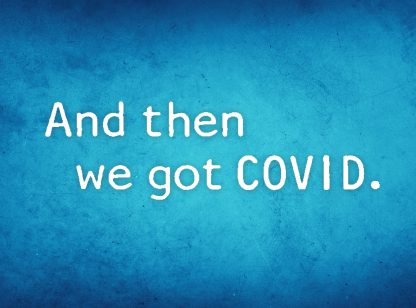


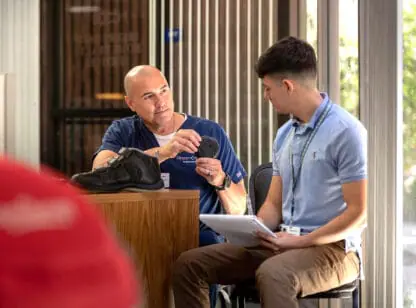

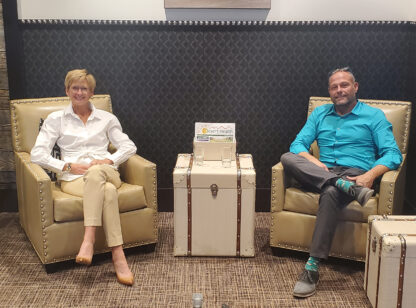
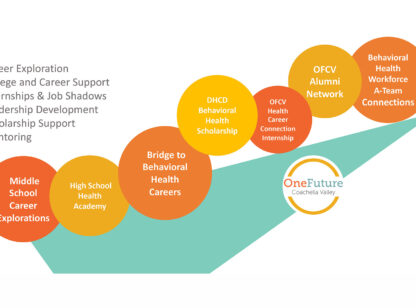






































Comments (0)